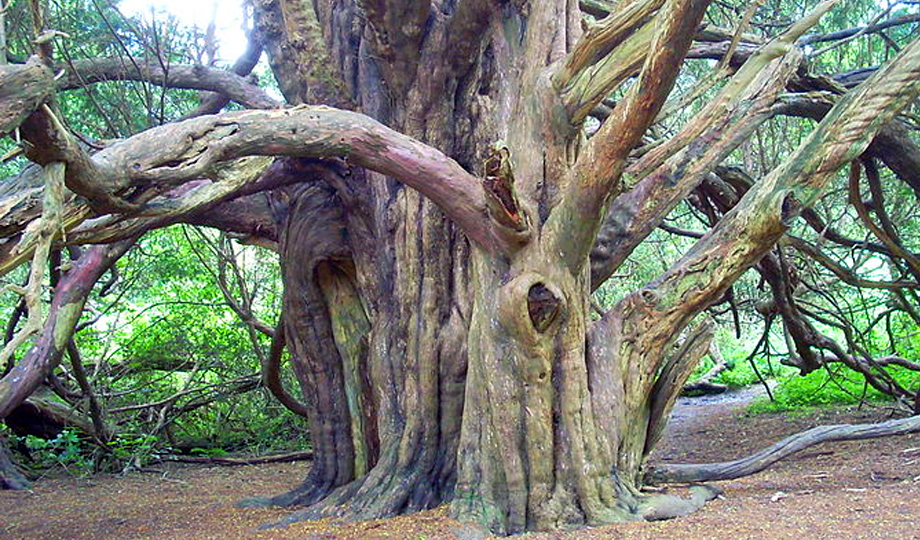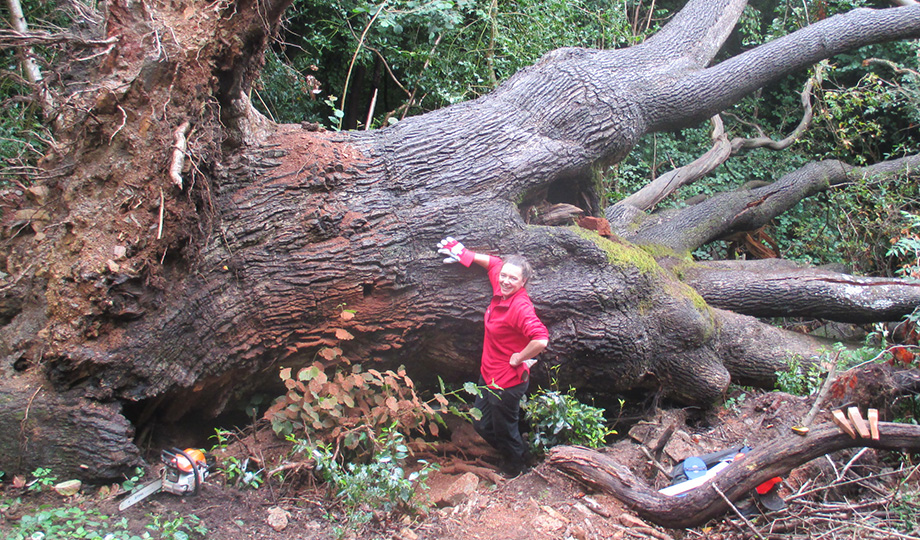Some of Britain’s most majestic ancient trees are probably not as ancient as we previously thought, one of the country’s leading tree-ageing experts has suggested.
Until now, the ages of some of Britain’s best-loved trees, including yews, sweet chestnuts and oaks, have largely been estimated from measuring the girth of their trunks – measurements which often result in a tree being declared hundreds or sometimes thousands of years old.
But a series of new studies using alternative techniques – such as taking a core from the tree and measuring the rings – have demonstrated that using such girth measurements can drastically overestimate the age of a tree, suggesting that many of Britain’s oldest trees are likely much younger than previously reported.
“There’s an awful lot of myths when it comes to trees – it goes back to the Celtic and Viking times and even before that – a lot of mythology,” said Dr Andy Moir, a research fellow at Brunel University London who specialises in ageing trees from their rings. “The older they are the more mystique they have.
“The situation with most ancient trees is that we measure its girth and then use that to calculate the age. There are different formulas you can use, but it’s usually ‘White’s formula.’
“But it can be incredibly inaccurate, as White admits himself – it depends on the situation, it depends on the species, on whether it’s getting a lot of light, on the geology. The size of trees planted at the same time around the same location can vary enormously, which shows that the formula for calculating the age of trees is often really inaccurate – what I’m trying to do now is make tree ageing a bit more accurate.”

An old yew | Wikimedia
Most recently, Dr Moir, alongside his colleagues Toby Hindson from the Ancient Yew Group and Peter Thomas from Keele University, published a paper in the Quarterly Journal of Forestry which used tree-ring analysis – taking a core from the tree and measuring the annual rings – to demonstrate that some of Britain’s oldest yew trees are thousands of years younger than previously thought. Old yew trees previously declared as 5000 years old using a derivative of White’s formula, were calculated to be only 950 years old when their rings were measured.
“Tree ring analysis gives you annual precision on many species in this country – a sequence of rings is like a calendar,” said Dr Moir. “It tells you what the weather was doing in any particular year throughout the life of a tree. It is possible to give an estimate for the age of a tree from its girth, but it is purely an estimate. Unless you’re looking at the rings and measuring the growth each year, you can be way, way off.
“People have been applying up to 6000 years onto the age of our largest yew trees – we’re saying we don’t believe there is anything still standing over 2000 years old. So potentially we have a 4000-year gap. Of course, two thousand years is still ancient for a tree – these yew trees are ridiculously old. All we’re doing is getting rid of some of the mystique and exaggeration.”

An old oak tree being prepared for ageing
Previous studies have found similar overestimation in the age of other species, including the sweet chestnut, whose introduction to Britain is commonly attributed to the Romans. Dr Moir said that recent research now suggests their introduction was far later.
“Everyone’s always thought sweet chestnut has been round for a long time, and that it was probably the Romans that introduced it, but nobody had delved too deeply in investigating the proof for that,” said Dr Moir.
“It’s endemic in science, once you get one interesting little fact out there – like the Romans introduced sweet chestnut to the UK – it tends to get used again and again in papers, without people going back to the original quote. My colleague Rob Jarman [at Gloucester University] basically went back to look at the original evidence and has dismissed probably 90% of it. He came to the conclusion at the end of his PhD that the sweet chestnut was probably a medieval introduction.”
Dr Moir said that some people had now stopped asking him to age their trees, for fear that he’ll give them an age far younger than the one they want to hear.
“We have a lot of huge oak trees on commons and cricket grounds in England, and each generation of locals will basically add a hundred years to the age of the tree,” said Dr Moir. “So, within a few generations you have a supposedly three or four-hundred-year-old tree. It comes back to myths and legend which can be incredibly strong, but that’s where I become involved to add a bit of science to it.
“I don’t do oak trees on cricket greens any more though, because when I tell people they’re not four or five hundred years old, I’m not very popular.”
Reported by:
Tim Pilgrim,
Media Relations
+44 (0)1895 268965
tim.pilgrim@brunel.ac.uk